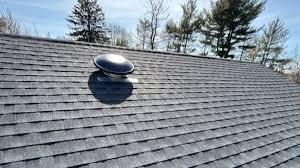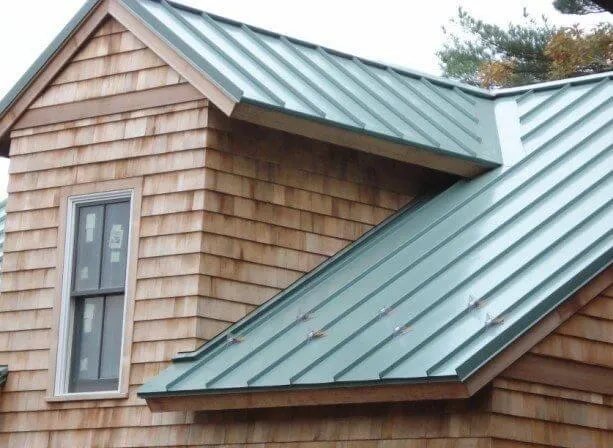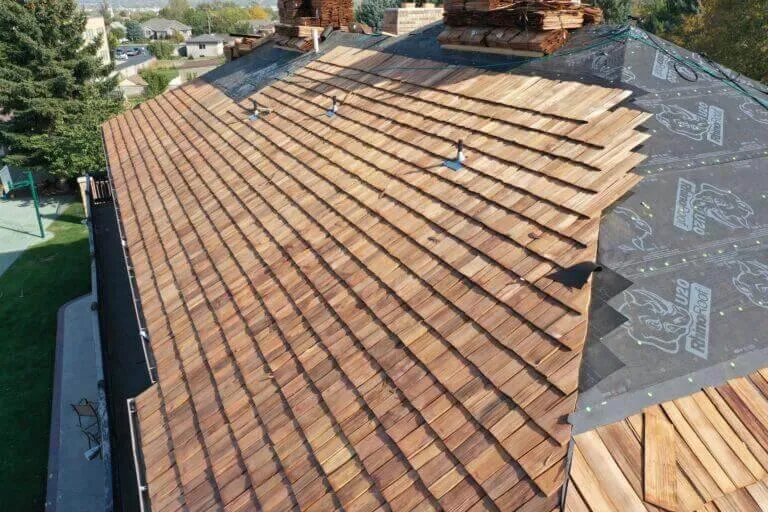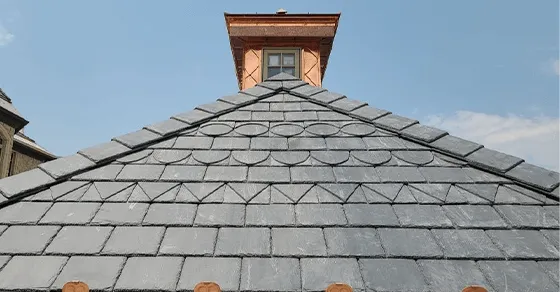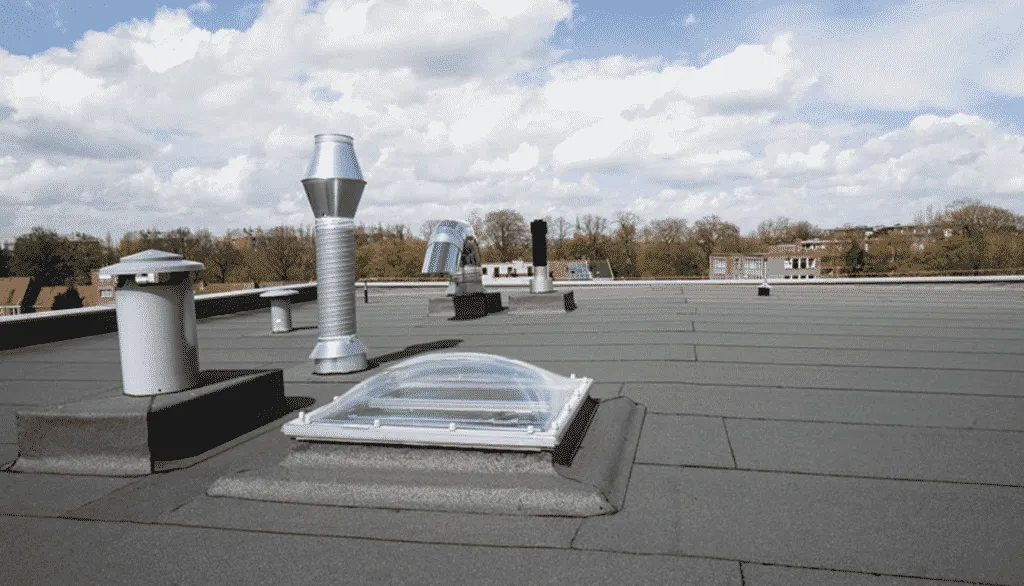Flat Roof Installation Carmichael
Flat Roof Installation Carmichael
If you're considering a flat roof installation in Carmichael, you've come to the right place. Flat roofs are popular for various reasons, from their cost-effectiveness to their modern aesthetic. In this article, we'll break down everything you need to know about flat roof installation, including materials, costs, and how to choose the right contractor for the job.
Key Takeaways
Flat roofs are versatile and can be used for various applications, including residential and commercial buildings.
Choosing the right material, like EPDM or TPO, is crucial for durability and performance.
The installation process involves assessment, planning, and careful execution to ensure a long-lasting roof.
Costs can vary based on materials, labor, and any additional work needed, so it's important to budget accordingly.
Regular maintenance can prevent major issues and extend the life of your flat roof.
Understanding Flat Roof Installation
What Is a Flat Roof?
Okay, so when we say "flat roof," we don't actually mean perfectly flat. That would be a recipe for disaster with water pooling and all sorts of problems. Instead, a flat roof has a very slight slope—usually less than 10 degrees—to allow for water runoff. Think of it more like a gently angled surface. These roofs are common on commercial buildings, but you'll also see them on homes, especially for additions or patios. The low slope is key to its design and function.
Benefits of Flat Roofs
Flat roofs have some cool advantages. For one, they're often more cost-effective to install than pitched roofs because they require less material and simpler construction. Plus, they give you usable space! Think about it:
You could put a green roof up there.
Install solar panels.
Even create a rooftop patio.
They also tend to be easier to access for maintenance and repairs. And in some architectural styles, a flat roof just looks really good. It's a clean, modern aesthetic that works well with certain designs.
Common Materials Used
When it comes to flat roofs, you've got a few main material options. Each has its own pros and cons, so it's worth doing your homework. Here's a quick rundown:
EPDM (Ethylene Propylene Diene Monomer): This is a synthetic rubber roofing. It's durable, flexible, and relatively inexpensive. It's also pretty easy to install, which can save on labor costs.
TPO (Thermoplastic Polyolefin): TPO is a single-ply roofing membrane that's heat-welded at the seams. It's known for being energy-efficient, reflecting sunlight to keep your building cooler. It's also resistant to punctures and tears.
PVC (Polyvinyl Chloride): PVC is another single-ply membrane that's super durable and long-lasting. It's resistant to chemicals, fire, and extreme weather. However, it can be a bit more expensive than EPDM or TPO.
Choosing the right material depends on your budget, the climate in Carmichael, and your specific needs. Talk to a roofing pro to figure out what makes the most sense for your situation.
Choosing the Right Flat Roofing Material

Okay, so you're thinking about a flat roof. Awesome! But before you jump in, you gotta figure out what material you want to use. It's not a one-size-fits-all kinda thing. Different materials have different strengths, weaknesses, and price points. Let's break down some popular options.
EPDM Roofing
EPDM, or ethylene propylene diene monomer, is basically a rubber roof. Think of it like a giant rubber sheet that gets glued down. It's been around for ages, and for good reason. It's durable and relatively cheap, which is always a plus.
Pros: Affordable, durable, and weather-resistant.
Cons: Can be punctured, limited color options.
Lifespan: 15-25 years.
TPO Roofing
TPO, or thermoplastic polyolefin, is a newer kid on the block compared to EPDM. It's a single-ply roofing membrane that's heat-welded together. It's known for being energy-efficient, which can save you some money on those summer AC bills. Plus, it comes in a few different colors, so you're not stuck with just black or gray.
Pros: Energy efficient, reflective, and comes in various colors.
Cons: Newer material, so long-term performance data is still being gathered.
Lifespan: 10-20 years.
PVC Roofing
PVC, or polyvinyl chloride, is another single-ply membrane that's super durable. It's often used in commercial buildings, but it's a great option for residential flat roofs too. One of the best things about PVC is its resistance to chemicals and punctures. If you're in an area with harsh weather or lots of potential for damage, PVC might be a good bet. It's especially effective in wet conditions due to its hot-air welded seams, which ensure durability and performance. PVC roofing is a solid choice.
Pros: Highly durable, chemical resistant, and long-lasting.
Cons: More expensive than EPDM and TPO.
Lifespan: 20-30 years.
Choosing the right material really depends on your budget, the climate in Carmichael, and what you're looking for in terms of longevity and maintenance. Talk to a few different contractors, get some quotes, and weigh your options carefully. Don't be afraid to ask questions!
The Flat Roof Installation Process
Initial Assessment
Before any work begins, a thorough inspection of your current roof is a must. This helps identify any existing damage, like leaks or weak spots, that need addressing. The contractor will also evaluate the roof's structure to ensure it can handle the new roofing material. They'll consider things like drainage and ventilation to prevent future problems. This step is super important because it sets the stage for a successful and long-lasting flat roof installation.
Preparation and Planning
Once the assessment is complete, it's time to prep the area. This involves removing the old roofing material, cleaning the roof deck, and making any necessary repairs to the underlying structure. Proper preparation is key to ensuring the new roofing material adheres correctly and provides a watertight seal. The contractor will also develop a detailed plan outlining the installation process, including the materials needed, the timeline, and any potential challenges.
Installation Steps
The actual installation process varies depending on the type of roofing material you choose. However, here's a general overview of the steps involved:
Applying Insulation: Insulation helps regulate the temperature inside your building and can reduce energy costs.
Installing the Roofing Membrane: The roofing membrane is the primary barrier against water and the elements. It's typically rolled out and secured to the roof deck using adhesives or mechanical fasteners.
Sealing Seams and Edges: Proper sealing is essential to prevent leaks. Seams and edges are carefully sealed to create a watertight barrier.
It's important to hire a qualified contractor who has experience installing flat roofs. A professional will ensure that the job is done correctly and that your roof is protected from the elements for years to come.
The installation process is crucial for the longevity of your roof.
Cost Factors for Flat Roof Installation
Alright, let's talk money. Figuring out how much a new flat roof will set you back involves a few different things. It's not just the material itself; labor, the size of your roof, and any unexpected issues that pop up can all play a big role. Here's the lowdown:
Material Costs
Obviously, the type of material you choose is going to have a huge impact on the overall cost. EPDM, TPO, PVC – they all have different price points. For example, EPDM is often a more budget-friendly option, while PVC tends to be on the higher end due to its durability and longevity. The cost is usually calculated per square foot, so the bigger your roof, the more you'll spend on materials. Don't forget to factor in things like adhesives, sealants, and fasteners, which can add up.
Labor Costs
Labor is another big chunk of the expense. You're paying for the expertise and time of the roofing crew. Labor costs can vary depending on where you live, the complexity of the job, and the contractor you hire. More experienced contractors might charge more, but they can also get the job done faster and with fewer mistakes, potentially saving you money in the long run. Always get a few quotes to compare labor costs in your area.
Additional Expenses
Beyond materials and labor, there are other potential costs to consider. These can sometimes sneak up on you if you're not prepared. Here's a few:
Tear-off and Disposal: If you're replacing an existing roof, you'll need to pay for the old one to be removed and disposed of. This can add a significant amount to the total cost.
Permits: Most cities and counties require permits for roofing work. The cost of a permit varies, but it's an essential part of the process to ensure the job is done to code.
Unexpected Repairs: Sometimes, when the old roof is removed, underlying damage is discovered. This could be rotten wood, damaged insulation, or other structural issues that need to be addressed before the new roof can be installed. Always have a little wiggle room in your budget for these surprises. Getting a flat roof replacement can be a big project, so planning for these costs is important.
It's a good idea to get a detailed estimate from a few different contractors. Make sure the estimate breaks down the costs of materials, labor, and any potential additional expenses. This will help you compare quotes and make an informed decision.
Finding Reliable Flat Roofing Contractors
Okay, so you're ready to get your flat roof installed or repaired. That's great! But finding the right contractor can feel like a real headache. It doesn't have to be. Here's how to make sure you pick someone who knows their stuff and won't leave you with a leaky mess.
What to Look For
First off, you want a contractor with experience. Flat roofs aren't like your typical sloped roof; they need special knowledge. Look for these things:
Licensing and Insurance: This is non-negotiable. Make sure they're licensed to work in Carmichael and have proper insurance (liability and worker's comp). Don't just take their word for it; verify with the licensing board and insurance company.
Flat Roof Specific Experience: Ask how many flat roofs they've installed or repaired. A general roofer might not have the expertise needed for a flat roof system.
Local Reputation: A contractor with a good reputation in Carmichael is worth its weight in gold. They're more likely to be reliable and stand behind their work.
Questions to Ask
Don't be shy about asking questions. This is your roof, after all! Here are a few to get you started:
"Can you provide me with a detailed estimate, breaking down all costs?"
"What type of flat roofing materials do you recommend for my building, and why?"
"What is your process for ensuring proper drainage and preventing ponding water?"
"Do you offer a warranty on your workmanship, and what does it cover?"
"How long have you been in business serving the Carmichael area?"
Checking Reviews and References
Reviews and references are your friends. Dig around online and see what other people are saying about the contractors you're considering.
Online Reviews: Check sites like Yelp, Google Reviews, and the Better Business Bureau. Look for patterns – are there consistent complaints about communication, quality of work, or pricing?
References: Ask for a list of past clients, especially those with flat roofs. Call those references and ask about their experience with the contractor. Did the contractor complete the job on time and within budget? Were there any issues, and how were they resolved?
Getting a flat roof installed is a big deal. Take your time, do your research, and don't be afraid to ask questions. A little effort upfront can save you a lot of headaches (and leaks) down the road.
Maintenance Tips for Flat Roofs
Flat roofs, while offering a sleek and modern look, do need a bit of TLC to keep them in tip-top shape. Think of it like this: a little maintenance now can save you from big headaches (and expenses) later. Let's dive into some easy ways to care for your flat roof.
Regular Inspections
Okay, so maybe "regular" sounds like a chore, but trust me, it's worth it. Aim for at least twice a year – once in the spring and again in the fall. Walk around the roof (carefully, of course!) and look for anything out of the ordinary. Are there any cracks? Bubbles? Obvious signs of wear and tear? Catching these things early can prevent them from turning into major problems. Don't forget to check the roofing materials around any vents or flashing, as these are common spots for leaks to start.
Cleaning Debris
Leaves, branches, and other debris can pile up on a flat roof pretty quickly. This isn't just unsightly; it can actually cause problems. All that stuff holds moisture, which can lead to premature deterioration of the roofing material. Plus, it can clog drains and scuppers, leading to ponding water (more on that later). So, grab a broom or a leaf blower and give your roof a good sweep every now and then. Your roof will thank you for it!
Addressing Minor Repairs
Small issues can turn into big problems if you ignore them. See a small crack? Patch it up! Notice some loose flashing? Re-seal it! You can often handle these minor repairs yourself with some basic tools and materials. But, if you're not comfortable doing it yourself, don't hesitate to call a professional. It's better to spend a little money now on flat roof repair than a lot of money later on a major repair or replacement.
Think of your flat roof like your car. You wouldn't skip oil changes or ignore a funny noise, would you? Regular maintenance is key to keeping it running smoothly for years to come.
Here's a quick checklist to keep in mind:
Inspect your roof twice a year.
Clear away any debris regularly.
Address minor repairs promptly.
Keep an eye out for ponding water.
Consider a professional inspection every few years.
Common Issues with Flat Roofs

Flat roofs, while offering a sleek and modern aesthetic, can be prone to specific problems if not properly installed or maintained. Understanding these potential issues can help you address them promptly and extend the life of your roof.
Leak Detection
One of the most common headaches with flat roofs is leakage. Because the roof is, well, flat, water doesn't naturally run off as easily as it does on a sloped roof. This can lead to water pooling and eventually finding its way through even the smallest cracks or seams. Early detection is key to preventing significant damage. Look for water stains on ceilings, damp spots on walls, or any signs of mold growth. Regular inspections, especially after heavy rain, can help you catch leaks early.
Ponding Water
Ponding water, also known as standing water, is another frequent issue. It occurs when water accumulates on the roof surface and doesn't evaporate within 48 hours. This can happen due to poor drainage, sagging, or uneven surfaces. Over time, ponding water can degrade the roofing material, leading to leaks and other problems. Proper roof installation is crucial to ensure adequate drainage and prevent ponding.
Addressing ponding water promptly is essential. Consider improving drainage by adding tapered insulation or installing additional drains. Ignoring ponding water can significantly shorten the lifespan of your flat roof.
Surface Damage
Flat roofs are exposed to the elements year-round, which can lead to various types of surface damage. This includes:
Cracking: Caused by temperature fluctuations and UV exposure.
Blistering: Air or moisture trapped beneath the roofing membrane.
Punctures: From foot traffic, falling debris, or hail.
Regular maintenance, such as cleaning debris and applying protective coatings, can help prevent surface damage. Addressing minor repairs promptly can also prevent them from escalating into more significant problems. Choosing durable materials like EPDM, TPO, or PVC can also improve the roof's resistance to damage. If you notice any damage, it's best to consult with roofing professionals for expert solutions to ensure the longevity of your roof.
Wrapping Up Your Flat Roof Journey
So, there you have it! Installing a flat roof in Carmichael doesn’t have to be a headache. With the right materials and a solid plan, you can have a roof that not only looks good but also stands the test of time. Remember, whether you’re going for a new installation or just need some repairs, it’s always smart to get a few quotes and find a contractor you trust. Don’t hesitate to reach out for help if you need it. Your roof is a big deal, and it deserves the best care. Happy roofing!
Frequently Asked Questions
What is a flat roof?
A flat roof is a type of roof that is nearly level, unlike traditional sloped roofs. It often has a slight pitch for water drainage.
What are the benefits of having a flat roof?
Flat roofs are easier to install and maintain. They can also be used for extra space, like a rooftop garden or deck.
What materials are commonly used for flat roofs?
Common materials include EPDM (rubber), TPO (thermoplastic), and PVC (polyvinyl chloride), each offering different benefits.
How long does it take to install a flat roof?
The installation time can vary, but it usually takes a few days depending on the size and complexity of the roof.
What should I look for in a flat roofing contractor?
Look for experience, good reviews, proper licensing, and insurance. It's important to choose someone reliable.
How can I maintain my flat roof?
Regular inspections, cleaning off debris, and fixing small issues quickly can help keep your flat roof in good shape.

Contact Us To Get A Free Quote!
Roofing We Install In Carmichael


